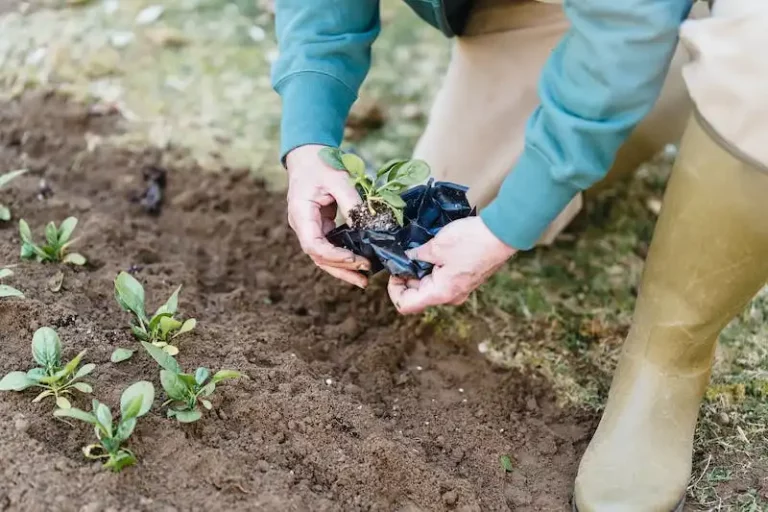When it comes to harvesting and curing onions, there are several important tips to keep in mind. Onions are a staple in the garden and knowing how to properly harvest and cure them will ensure that you have a good supply of onions to enjoy throughout the year.
One of the first things to consider is when to harvest your onions. Onions should be harvested when the tops start to fall over and dry out. This usually occurs in late summer or early fall, depending on the climate. It’s important to harvest them before the first frost, as cold weather can damage the onions.
Once your onions are harvested, the curing process begins. Curing involves drying the onions to remove excess moisture and toughen the outer layers. To cure your onions, you can spread them out on a screen or hang them in a well-ventilated area, such as a garage or shed. Make sure to keep them out of direct sunlight, but with good airflow.
Onions need to be cured for about two to three weeks. During this time, the outer layers will dry and the bulbs will become firmer. Curing also helps to enhance the flavor and increase the shelf life of the onions. Once cured, the onions can be stored in a cool, dry place, such as a basement or pantry.
There are several options for storing cured onions. One popular method is to hang them in mesh or burlap bags in a cool place with good airflow. Another option is to store them in wooden crates or boxes with layers of newspaper between each layer of onions. Some people prefer to store their onions in a mesh basket so air can circulate around them.
When it comes to preserving onions, there are also a few options to consider. One method is to freeze chopped onions in resealable bags. Another option is to dehydrate onions to make onion powder or flakes. This can be done using a dehydrator or by placing sliced onions on a screen and letting them air dry.
In conclusion, harvesting and curing onions is an important part of the gardening process. Knowing when and how to harvest and cure your onions will ensure that you have a good supply of flavorful, high-quality onions to enjoy throughout the year. Whether you choose to store them whole or preserve them in another form, onions are a versatile and delicious addition to any kitchen.
Onion Harvest and Curing
Harvesting and curing onions are important steps in the homestead or home garden. Knowing when and how to harvest and cure onions can ensure that you have a good supply of onions for long-term storage.
When it comes to harvesting onions, there are a few tips to keep in mind. Onions should be harvested when the tops have fallen over and started to dry out. This usually happens about 4 to 8 weeks after planting, depending on the variety and growing conditions. The necks of the onions should feel firm and the outer part of the bulb should be dry.
To harvest onions, gently pull them out of the ground, being careful not to damage the bulbs. If the tops are still green, you can leave them in the garden for a few more days to allow them to dry in the sun. Once the tops have completely dried, cut them down to within an inch of the bulb.
Curing is an important step in preserving and storing onions for long-term use. After they are harvested, onions should be cured in a warm, well-ventilated area for about two to three weeks. This process helps to dry out the outer wrapper leaves, which will improve the keeping quality of the onions.
To cure onions, spread them out in a single layer on a wire screen or a mesh rack. Make sure to place them in a location where they will be protected from rain and direct sunlight. The ideal temperatures for curing onions are between 80°F and 90°F, with low humidity. If you live in a region with cool or humid weather, you may need to use a greenhouse or a drying room with controlled temperatures.
During the curing process, it’s important to regularly check the onions for any signs of mold or decay. Remove any onions that show signs of damage to prevent the spread of spoilage. After the onions have cured, they can be stored in a cool, dry location. The best storage options for cured onions include mesh bags, braiding the tops together and hanging them in a cool, dry place, or storing them in a well-ventilated box or crate.
When it comes to storing onions for the long-term, there are a few more tips to keep in mind. Onions should be stored at temperatures between 35°F and 40°F. They should also be kept away from other produce, as onions can release gases that can cause nearby fruits and vegetables to spoil. It’s also important to store onions in a well-ventilated area to prevent excess moisture buildup.
By following these tips for harvesting and curing onions, you can ensure that your home-grown onions will last for many months. Whether you’re using them for cooking or preserving, having a good supply of quality onions is a valuable asset in the kitchen.
Harvest Tips for Best Quality
When it comes to harvesting and storing onions, there are some key tips you should know to ensure the best quality. Here are a few harvest tips that will help you make the most of your crop:
1. Choose the right time to harvest. Onions should be harvested when the leaves start to turn yellow and flop over. This typically happens in late summer or early fall.
2. Be careful when handling harvested onions. Onions have a delicate tissue that can easily be bruised or damaged. Handle them gently to avoid any unnecessary injuries.
3. Cure the onions in a well-ventilated place. After harvest, onions should be cured for about two weeks to allow their skins to dry and toughen up. This helps to reduce the risk of disease and makes them suitable for long-term storage.
4. Hang the onions in a cool, dry place. After curing, hang your onions in a cool, dry place with good airflow. This could be a dark corner of your garage or a well-ventilated shed.
5. Store the onions in a cool, dark place. Once the onions are completely dry, you can store them in a cool, dark place, like a basement or root cellar. The ideal temperature for storing onions is between 32°F and 40°F (0°C and 4°C).
6. Use appropriate storage containers. Onions can be stored in mesh bags, wire baskets, or even old pantyhose. Just make sure the storage container allows for good airflow to prevent moisture buildup.
7. Separate and sort the onions. It’s important to separate and sort your onions by size and condition. Larger, firm onions with intact skins are best for long-term storage, while smaller or damaged onions can be used for immediate consumption.
8. Avoid storing onions with fruits and garlic. Onions emit a gas that can cause other fruits and garlic to spoil quickly. Keep them separate to maintain the freshness of all your produce.
9. Consider alternate storage methods. If you have limited space or prefer a different storage method, you can also freeze onions. Just remember to peel and chop them before freezing.
10. Know the shelf life of your onions. Under the right conditions, onions can be stored for several months. However, it’s important to regularly check for any signs of rot or disease to avoid spoilage.
By following these harvest and storage tips, you can successfully store your onions for months and enjoy fresh, high-quality produce throughout the year.
Harvesting and Curing Onions
When it comes to harvesting and curing onions, there are several options you can consider depending on your needs and preferences. Onions can be harvested when they’re fully grown and the foliage has started to die down. This usually happens in late summer or early fall, depending on when you planted them.
One popular method for harvesting onions is to simply pull them out of the ground by hand. If you have a large yard and like to grow many onions, this may not be the most efficient option. In that case, using a pitchfork or shovel to loosen the soil around the onions and then gently lifting them out of the ground may be a better option.
Once the onions are harvested, it’s important to cure them before storing them for long-term use. Curing involves allowing the onions to dry out in a warm, well-ventilated area for several weeks. This helps to toughen the outer layer of the onion, allowing it to be stored for months without rotting.
One way to cure onions is to lay them out on a screen or wire mesh surface, such as a drying rack or a table with wire mesh. Make sure to spread them out in a single layer, so they don’t touch each other. This allows for better airflow and helps the onions dry more evenly.
Another option for curing onions is to hang them in a dry, well-ventilated area, such as a shed or a greenhouse. You can do this by tying the onion stems together and hanging them upside down from a string or wire. Make sure to leave enough space between each onion to allow for proper airflow.
Regardless of the curing method you choose, it’s important to monitor the onions regularly during the curing process. Check for any signs of disease or rotting and remove any onions that show signs of damage. This will help ensure that the rest of the onions stay in good condition.
Once the onions are fully cured, you can store them in a cool, dry place. Some people prefer to store them in mesh bags or crates, while others like to braid the onion tops together and hang them up. It’s really up to you and what works best for your home and storage options.
When it comes to using onions, they can be used in a variety of ways. From cooking to adding flavor to soups and stews, onions are a versatile and essential ingredient in many dishes. If you have an abundance of onions, consider freezing or drying them for long-term storage.
To freeze onions, peel and chop them into the desired size. Then spread them out on a baking sheet and freeze them until they’re solid. Once frozen, transfer them to a freezer-safe bag or container. Frozen onions can be used directly from the freezer, making them a convenient option for quick and easy meal preparation.
Drying onions involves removing the outer skin and slicing them into thin, even pieces. Then, spread the onion slices out on a dehydrator tray or on a baking sheet lined with parchment paper. Dry the onions at a low temperature, around 130°F (54°C), until they’re completely dry and brittle. Store the dried onions in an airtight container in a cool, dry place.
Overall, knowing how to harvest and cure onions is essential for long-term storage and maintaining the quality of your harvest. There are many options and methods to choose from, so find what works best for you and your growing season. With proper harvesting and curing techniques, you’ll be able to enjoy your homegrown onions for months to come.
To learn more about onion harvesting and curing, check out our related articles for tips and advice.

